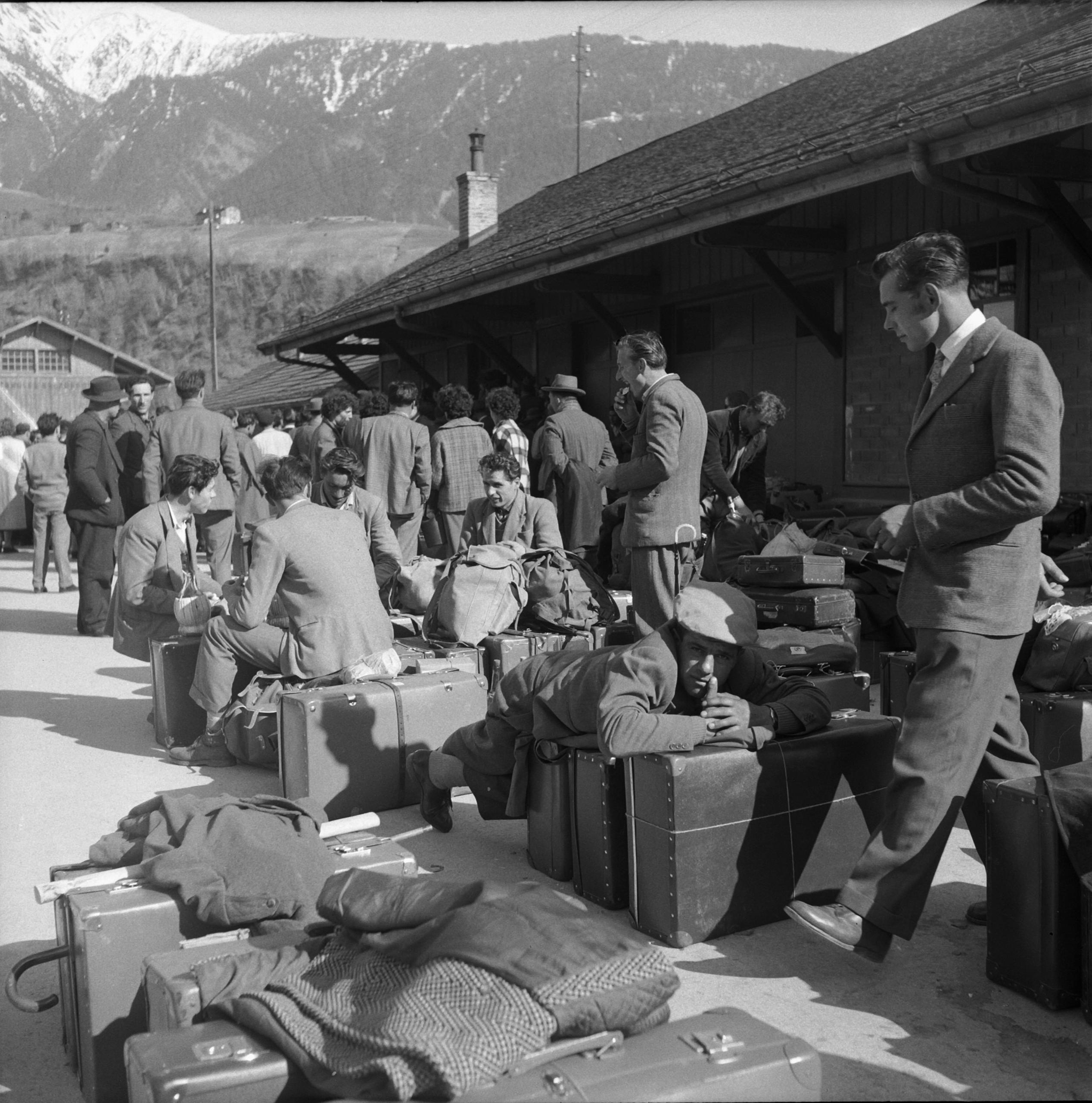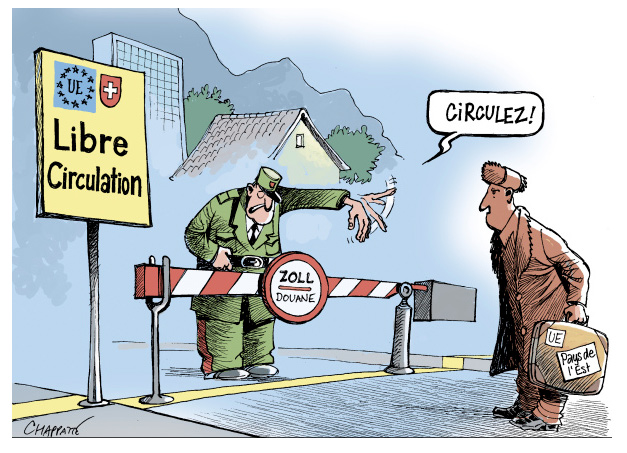
Swiss immigration policy has always put pragmatism first

Switzerland is still wrestling with the thorny question of how to reconcile immigration quotas with the accord on the free movement of people. History may hold some answers – or at least explanations.
Negotiations with the European Union are all but dead after voters approved the initiative “against mass immigration” more than two years ago. The last century of immigration history in Switzerland reveals the overriding view that a good foreigner is a useful foreigner.
Immigrants have contributed greatly to the construction of modern Switzerland. In 1914, they made up 15% of the country’s population, coming mostly from France, Germany and Italy. Some were bankers or captains of industry, but most worked in the fields, factories or building the railways. During the First World War, tensions in the country were high between those who supported Germany, and those who sided with France. With the economic crisis that followed came the fear of “Überfremdung” – a German term for an overflow of foreigners who were now seen as a threat to national cohesion.
It was in this climate that the first piece of legislation regarding foreigners was enacted in 1931.
“It really contains the idea that Switzerland is not a country of immigration and that foreigners can only stay for a limited duration. It’s the origin of the famous ‘seasonal worker’ statute,” says Etienne Piguet, professor of human geography at the University of Neuchâtel and author of the book “Immigration in Switzerland, 60 years of being half open”.
When the Second World War ended, Switzerland needed workers, and the country threw open its doors to immigrants. When the economy slowed and the need for migrant workers decreased, it closed them a bit. Such was the case in 1963 when, for the first time, the government introduced a maximum quota of seasonal workers per canton.
The long path to integration
Dubbed “guest workers” or “foreign workers”, the terminology used made it clear: foreigners – especially Italians at the time – were welcome to come and work, but nothing more. Rome, however, was not happy with the arrangement. In 1964, under sustained pressure from Italy, Switzerland relented and allowed seasonal work permit holders to apply for an annual work permit after five years and gave Italian workers the right to family reunification.

More
Cartoonists unimpressed by immigration vote
The same year, the first popular initiative “against foreign control” was launched in Zurich but was withdrawn before being put to a popular vote. The next initiative came in 1970, driven by parliamentarian James Schwarzenbach of the National Action party. It aimed to limit the number of foreigners to 10% of the country’s population but was rejected by 54% of voters.
Similar initiatives in 1974 and 1977 were rejected even more emphatically. Meanwhile, the government established the Federal Commission for Foreigners, which aimed to facilitate integration and accelerate the naturalisation process.
“We began to admit that these people were a part of our society, that they didn’t leave and that another generation was in the process of being born,” explains Sandro Cattacin, sociologist at the University of Geneva and expert on Swiss migration policy. “It was really the beginning of integration policy.”
After the wave of xenophobia in the 1970s, the Left fought back with a proposition to eliminate the seasonal worker statute altogether, which it deemed to be inhumane. But the initiative, called “Be United”, was rejected by a massive 84% of voters. It was not until 2002 with the introduction of the agreement for the free movement of people between Switzerland and the EU that the seasonal worker permit finally disappeared. In 1985, 1993 and 1995, the Swiss also rejected three initiatives aimed at directly limiting immigration.
‘Half open’
“You could say that during [the 1980s and 1990s], no really restrictive initiatives were accepted,” says Piguet. “But no really pro-immigrant initiatives were accepted either. We wanted immigration, we recruited immigrants, in large part for economic reasons, but at the same time we always wanted to put a limit on it. That’s why I talk about being ‘half open’.”
For Cattacin, Switzerland’s cities today seem to have generally adapted well to immigration. But there remains a section of the population that still leans towards more isolationist thinking, something which has evolved over the decades.
“The xenophobic discourse of the 1960s and 70s was not based on culture, as it is today, but on holding on to that which makes the country beautiful,” Cattacin explains.
“Schwarzenbach was a romantic…very nature-oriented. During his time, Switzerland experienced an accelerated urbanisation, a little like what is happening today in Eastern European countries. And when that happens too quickly, it is disorienting for people and awakens their conservative reflexes.”
A first
So how to explain the vote on February 9, 2014, when the Swiss narrowly accepted the conservative right Swiss People’s Party initiative “against mass immigration”? The initiative called for the reintroduction of immigration quotas, in defiance of the agreement for the free movement of people with the European Union.
“It’s an interesting case,” says Cattacin. “Because the majority of the previous initiatives, which were overtly xenophobic, garnered almost the same result: 60-40 against. But about 20% of the electorate is ready to switch to xenophobic positions if it doesn’t impact their well-being, or their wallet. We saw it with the ban on minarets and we will see the same thing again with the ban on burkas.”
Cattacin argues that the February 9 initiative was a bit of an outlier because it “has important economic consequences and still managed to rally a part of that 20%”.
That’s due, he says, to “confusion in the minds of people who were not really aware of what they were voting for”.
“For example, we saw the Greens in Ticino support the initiative, driven by an ecological, anti-European reflex. And this was enough to swing the ‘yes’ vote and create problems that we don’t know how to get out of.”

In compliance with the JTI standards
More: SWI swissinfo.ch certified by the Journalism Trust Initiative




























You can find an overview of ongoing debates with our journalists here . Please join us!
If you want to start a conversation about a topic raised in this article or want to report factual errors, email us at english@swissinfo.ch.